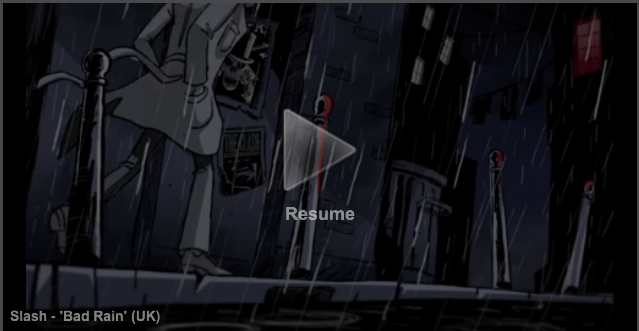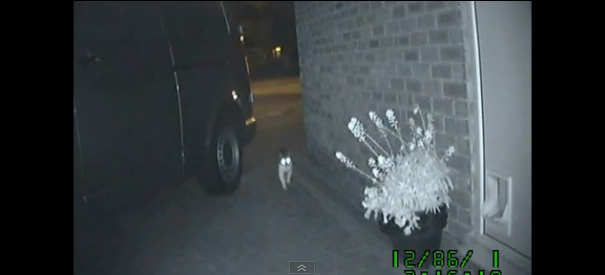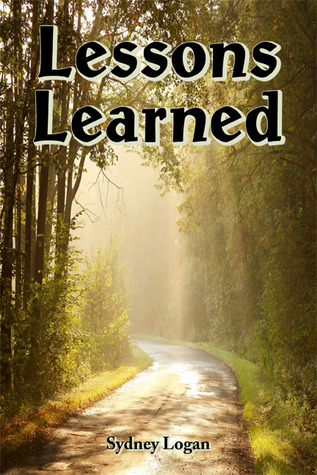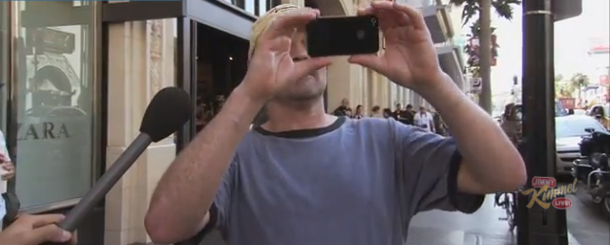The UK exclusive new video from Slash, for “Bad Rain”, has now been released. Check it out here, or pick up the album here
Category: Entertainment
Video of the Week: Real-Life Cat Burglar
Now making national news, the real-life cat burglar
Film Review: Black Narcissus
Throughout the 1940s and ’50s, Michael Powell and Emeric Pressburger produced numerous films of note, many of them rivalling anything that came out of Hollywood. Their collaborations began in 1939 with the First World War thriller The Spy in Black, which Powell directed and Pressburger wrote the screenplay for. A couple of years later they co-founded their production company The Archers and made One of Our Aircraft is Missing (1942). The two would go on to share a writer-director-producer credit until the partnership ended in 1957 and along the way they gave us such classics as A Matter of Life and Death (1946), The Red Shoes (1948) and The Battle of the River Plate (1956).
Arguably their most memorable offering was Black Narcissus (1947), a wonderful psychological drama set within a convent in an isolated Himalayan valley. The stunning Technicolor photography alone is enough to imprint this movie forever on your mind and if you’ve never seen, I urge you to do so at your nearest convenience. The use of matte paintings and scale models has rarely been used with such skill and majesty and despite the fact that the landscape is clearly fake, it is lit and coloured so magnificently, that it’s all the more awesome for being so. Costumes too, seem to take on a symbolic relevance and whether it’s the godliness of white robes, the devilishness of a red dress or the honesty and frankness of being semi-naked, there’s a depth to be found in every detail we see.
The plot revolves around a group of nuns – lead by the Sister Superior Clodagh (Deborah Kerr) – who are sent to the abandoned Palace of Mopu, near Darjeeling in the Himalayas to establish a school and hospital in order to help civilise the local community. Their mountainside convent is a former harem complete with sensual mosaics and images on its walls, and making it habitable is the nuns’ first hurdle to overcome. Sister Clodagh is forced to accept the help of local British agent Dean (David Farrar) to achieve this and Dean immediately makes a hurdle of himself but in a different way. His deep-voice and hairy-chested masculinity affects the nuns to varying degrees and seems to remind several of them that they are, after all, women and as if that wasn’t enough, Jean Simmons, in a very early role, has a memorable part as a mischievous local dancing girl, who with her flowing silks and flirtatious demeanour, presents a stark contrast to the nuns’ chaste way of life.
Dean warns Clodagh from the outset that the palace is no place for a convent and later credits the high altitude as capable of playing havoc with one’s senses. It’s not long before the isolation and the atmosphere unsettles the nuns while Dean’s bullish machismo begins to affect Sister Clodagh and Sister Ruth (Kathleen Byron). Clodagh finds herself dwelling on the failed romance that drove her into the Sisterhood several years prior while Ruth becomes pathologically jealous of Clodagh’s growing friendship with Dean. The climate, the mystique of the local culture and the nuns’ own fallibility all play a part in this story and each of these adds to the tension as it rises like the mountainous peaks that surround them.
If this might sound less than exciting, do not be fooled. This film is a masterpiece. Full of psychological suspense and sexual desire Black Narcissus is, in Michael Powell’s own view, the most erotic film he ever made. “It is all done by suggestion,” he said, “but eroticism is in every frame and image from beginning to end. It is a film full of wonderful performances and passion just below the surface, which finally, at the end of the film, erupts.”
The climax is a riveting pastiche of music and image on a truly epic scale with no dialogue, just a mesmerising operatic symphony of sound that will turn your knuckles white. An interesting note here is that the music for this scene was scored before the scene was shot which meant the actors’ motivations and movements were choreographed to the music just as they would be on a stage. Truly, truly wonderful stuff.
The film collected two Academy Awards at the 1958 Oscar’s ceremony for Best Cinematography and Best Art Direction. Deborah Kerr won the New York Film Critics Circle Award for her portrayal of Sister Clodagh. It holds number 44 in the British Film Institute’s greatest British films of the 20th century and number 16 in Time Out’s 100 best British films list.
The 65 years that have passed since the film’s release hasn’t diminished its impact. The haunting beauty of the painted landscapes and backdrops and the film’s vivid colour simply adds to its lasting appeal. To see it once, is to never forget it.
Book Review: Lessons Learned, by Sydney Logan
//
// <![CDATA[
// ]]>
A town reliant on the two pillars of school and church, Sycamore Falls is a profoundly conservative community in the American South, named after the falls that provide a local beauty spot. An English teacher named Sarah has returned to her hometown from Memphis, where a violent incident about which she feels guilty has traumatised her. Going back to live in the house that her grandmother has bequeathed to her, romance blooms when she meets fellow teacher, Lucas, newly arrived from New York City. Their relationship is conducted against the background of events surrounding a troubled student jock called Matt.
Sarah sees Sycamore Falls and the house where she used to live with her grandmother as a place of safety. Her need to return to her roots has taken her by surprise. It’s a response to her witnessing a shooting incident at her former school involving a vulnerable student followed by the end of her relationship with an unsupportive partner. She craves the familiarity of home where she had a special bond with her grandmother, who cared for her after the death of her parents when she was 16 years old.
Spoiler Alert (but not really)
A small town gal returning home from the big, bad city is familiar territory as is a tormented student struggling with his sexuality. I don’t think I’m giving anything away as Matt being gay is kinda flagged up before the reveal, so it doesn’t come as any surprise. He’s the football team’s quarterback and the story begins with him dating the head cheerleader. The author displays a neat sense of the book’s self-awareness. Matt even describes himself as “a walking stereotype”. It’s easy to imagine this as a TV movie, complete with spectacular mountain scenery.
The Sin Bin
When Matt’s sexuality is revealed, the town is divided with many people at school, on the football team and in church ostracising him. His few allies include our romantic pair, Sarah and Lucas. Oh, they disapprove of his ‘lifestyle’, but they don’t think that should affect anyone’s relationship with him or treatment of him. I was waiting for at least one character to come along and say that, actually, there is nothing wrong with being gay, but no one ever does. No one is put forward to offer a counter argument.
All credit to the author for incorporating a controversial social issue in the romance genre, but it won’t go far enough for the more liberal readership. The message is to disapprove of the ‘sin’ and not the ‘sinner’. Even the Falls is a metaphor for sins being washed away.
The only argument to support the disapproval is that the Bible says so, so there isn’t any springboard for a debate. There is a lot of talk about tolerance and unconditional love, ironically also inspired by the Bible. Small town life and life in the ‘big city’ is compared in terms of its capacity for tolerance. The author asks the question, are the ugly attitudes of a small town ever a price worth paying for living there?
In Lucas, Sarah finds her soul mate, as he too is coming to terms with an upsetting incident. He’s left New York under a cloud, despite being cleared of all charges, having faced a malicious and false accusation by a student. When Matt’s problems overwhelm him, Sarah and Lucas are determined to defend him. This new situation mirrors the one in which Sarah’s former student in Memphis found himself and her guilt about failing to save him is a compelling motive to save Matt. Helping this young man represents closure for Sarah and the chance to move on from her past.
This might sound unkind, but Sarah is high maintenance. Lucas has the patience of a saint in dealing with her insecurities and mood swings. She is reluctant to let herself go and trust her feelings. This leads to some tension, which sometimes seems to be heading for conflict but it never comes. I was longing for a blazing row, but instead, Lucas dries her tears and sweetly reassures her every time.
The couple’s bond is cemented in the face of Matt’s life spiralling out of control. He’s a sensitive and thoughtful young man, without being insipid. At the other end of the spectrum, his father and his head teacher are reactionary bullies and respond as if he’s grown two heads overnight.
Future Promise
Sydney Logan has a very good ear for dialogue, both dramatic and light-hearted. She doesn’t go in for elongated descriptive passages, so the pace zips along and you certainly want to turn the page to see what happens. The structure of the story is impressive given this is her debut novel.
When Logan looks at the raw emotions of Matt and the people affected by the fall out, it is very powerful and I would have preferred more of that and less of the domestic bliss of our loved up teachers. There was a bit too much “brushing lips” for my taste, but this is a romance novel, after all. I did find Lucas to be impossibly perfect, to the point of being tedious.
I think Sydney Logan has an assured future as a writer. One of the most moving passages is when Matt’s mother makes a speech defending her son to the church congregation. My wish would be for her to explore issues in a more balanced way in her next book and to do more of what she’s good at – describing real emotions.
If you have a Kindle and want to read Lessons Learned, you can grab a copy here.
Video of the Week: Showing the iPhone 4S to Public and Telling them it’s the 5
We wouldn’t make any accusations about the IQ of Apple fans like some other places, although Apple’s Marketing Senior Vice President Phil Schiller might, suggesting that wireless charging isn’t in the iPhone 5 because Apple users aren’t smart enough to use it:
“Having to create another device you have to plug into the wall is actually, for most situations, more complicated,”
Nimbly sidestepping the point that a traditional charger also plugs into the wall, but wireless charging means you don’t have to fiddle with that cord to plug into the phone in the dark, and wireless charging means your phone can charge while sitting on top of the speaker playing music wirelessly with NFC. And, thanks to wireless charging pillows being available in myriad places soon (including Coffee Bean), users don’t have to worry about carrying a charger around to ensure they have enough juice to last the day.
But Jimmy Kimmel had someone take to the streets with an iPhone 4S and told people it was an iPhone 5. Including people already owning and holding the 4S.
Video of the Week: Fastest Undresser in the World
The world’s fastest undresser




